Did you know that employees who are well matched to their jobs are 2.5 times MORE PRODUCTIVE on the job?
Studies show that proper “job fit” (the alignment of a person’s strengths, needs and wants with the specific position and work environment) improves engagement and job satisfaction, resulting in increased productivity while simultaneously reducing negative factors like job-related stress, tension, workplace conflict and costly employee turnover.
Who wouldn’t want that?!?!
A 20-year study involving 360,000 people, published by Harvard Business Review, demonstrated that a key ingredient in retaining employees is ensuring that they are matched to (or fit) their jobs in terms of abilities, personalities and work-related interests. The study found that when individuals are placed into positions that matched them relative to these three categories, employee turnover decreased dramatically and productivity increased drastically!
Imagine the impact on your organization if every employee was matched to their position! Imagine the impact of having more employees like your very best. What does that look like for you? What does that look like for the employees? What does that look like for your students? How does this enhance or develop the culture of your organization? How does this foster the TPI culture inside your organization? How does this enhance the relationships with the community?
Words trigger pictures, which trigger emotions. If the above words triggered some powerful pictures for you, then you also felt the positive emotions of a “Job Fit Organization”!
Here are three simple steps in achieving Job Fit:
- Identify top performers. These are the super star employees! Look at their performance, quality metrics, satisfaction surveys, and other other Key Performance Indicators for the position. I recommend utilizing a reliable, valid and compliant assessment solution to measure their abilities, personalities and work-related preferences so that you know, and can measure, exactly what you are looking for.
- Benchmark top performance. What are the commonalities among the top performers in each positon? This will become the template, or model, that you can hire to and coach to.
- Evaluate candidates relative to these benchmarks. When you know exactly what you are looking for, it becomes easier to objectively see which candidates fit and which ones do not.
Most often, employees are hired on perceived competence and leave because of their lack of “fit.” Jobs are not a “one size fits all” proposition. Just because someone is successful in a positon at ABC Organization does not mean that they will be successful at that same position at XYZ Organization. There are many factors at play: Organizational culture, Management style and Location/demographics just to name a few. Think about the differences between someone in “Job A” who lives and works in New York City verses someone who does the same job (“Job B”) in Omaha, Nebraska. If you have ever had the opportunity to visit those two cities, I think you’ll agree that they are both wonderful in their own rights, yet incredibly different! This translates directly to the job. A job is not a job is not a job. Just think about the differences between similar organizations where one organization embraces the TPI concepts and another organization does not.We human beings love to maximize our given talents. We really enjoy doing things in which we excel. Job Fit is the term we use to describe what happens when a human being gets to utilize their given talents at work. These people will usually tell you that “they love their jobs” and that “it’s really not work” or, “I can’t believe I get paid to do this!” Now, there’s no perfect job, and it wouldn’t be called “work” if there wasn’t some work involved. However, amazing things happen when individual talents and strengths are aligned with jobs.
Can you set a goal to be a Job Fit Organization?
What does the picture look like when your employees all fit their jobs and you have increased the number of top performers in your organization? When your classrooms are filled with fantastic instructors and admissions is enrolling the right students in the right way? When Financial Aid professionals and career services professionals are totally committed to the students and the school?
How does this picture align with your current reality?
Featured posts
May 16, 2023
May 16, 2023
May 16, 2023





